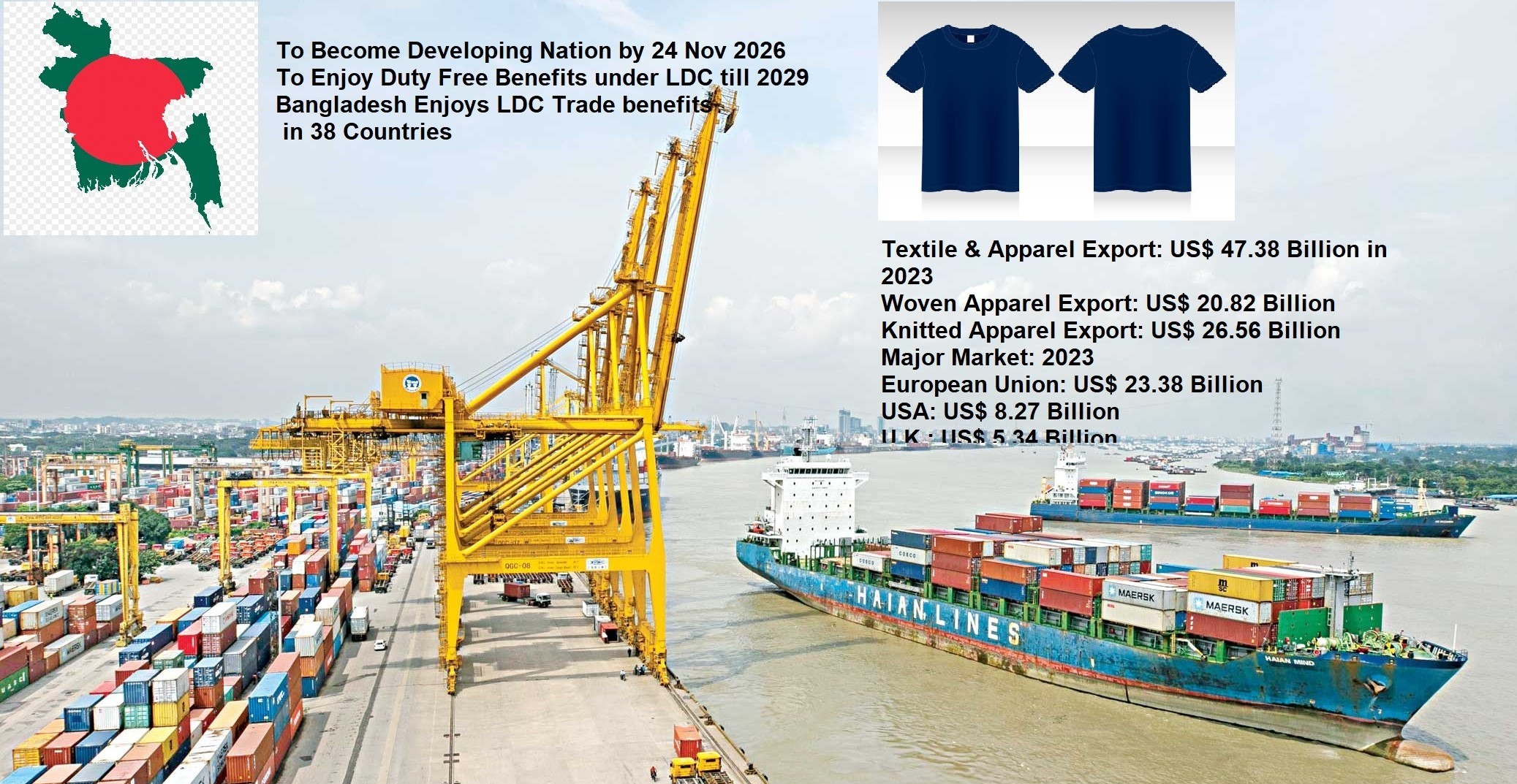
Bangladesh To Enjoy Duty Free Market Access Benefits Until 2029, Three Years After Graduating To Developing Nation
Bangladesh will keep enjoying duty-free market access under
Least Developed Countries (LDC) till 2029. This is a three years’ grace period
after the country’s graduation from LDC to a developing nation in 2026. This
extension has been endorsed by 166 members of the World Trade Organisation
(WTO) at its Ministerial Conference that concluded in Abu Dhabi on 1st March
2024.
"A member that graduates from the LDC category shall
continue to be eligible for LDC-specific technical assistance and
capacity-building provided under WTO's Technical Assistance and Training Plan
for a period of three years after the date on which the decision of the UN
General Assembly to graduate that member from the LDC category becomes
effective," said the WTO.
After an intense negotiation, the member countries reached the consensus
on the extension of the trade benefits for the LDCs (least-developed countries)
that graduate. Bangladesh joined the LDC group in 1975 and is going to leave it
on November 24 of 2026.
Experts indicated that Bangladesh was to lose US$7 billion worth
of trade per year following the graduation due to erosion of preferential trade
facilities under LDC. A recent study also indicated that Bangladesh’s
graduation would result in a decrease in apparel exports of 11.8 per cent. That
uncertainty is now over until 2029.
The garment industry is the primary export sector in Bangladesh,
which has around 81 per cent share in total exports. It is the world’s
second-largest exporter of garments, accounting for 7.9 per cent share of the
global apparel trade. The Ready-made garment (RMG) industry heavily relies on
tariff benefits and around 73% of Bangladesh's RMG export is enjoying duty-free
market access as LDC. The withdrawal of these advantages could have led to job
losses and decline in Bangladesh’s export trade as well as would cause a major
shift in the sourcing pattern of global apparel buyers.
The EU is the largest market for Bangladeshi apparel that
constitutes 64% of the country’s apparel export. The graduation to developing
nation would have triggered a tariff of 9%-10% on the merchandise which now
enjoys duty free access.
The WTO countries agreed to extend the trade benefit to the
graduated LDCs at the previous 12th Ministerial Conference in Geneva in 2022
without any specified time period. Bangladesh can now negotiate for trade
benefits with the EU, China, India, UK, South Korea and other countries where
it qualifies for the facility.
However, Bangladesh will not enjoy trade benefits with the USA
even though the American negotiator endorsed the extension. The US currently
has no preferential duty programme for the LDCs and Bangladesh's RMG export
faces a 15.62 per cent tariff in the US market.
Bangladesh will keep enjoying duty-free market access under Least Developed Countries (LDC) till 2029. This is a three years’ grace period after the country’s graduation from LDC to a developing nation in 2026. This extension has been endorsed by 166 members of the World Trade Organisation (WTO) at its Ministerial Conference that concluded in Abu Dhabi on 1st March 2024.
If you wish to Subscribe to Textile Excellence Print Edition, kindly fill in the below form and we shall get back to you with details.








